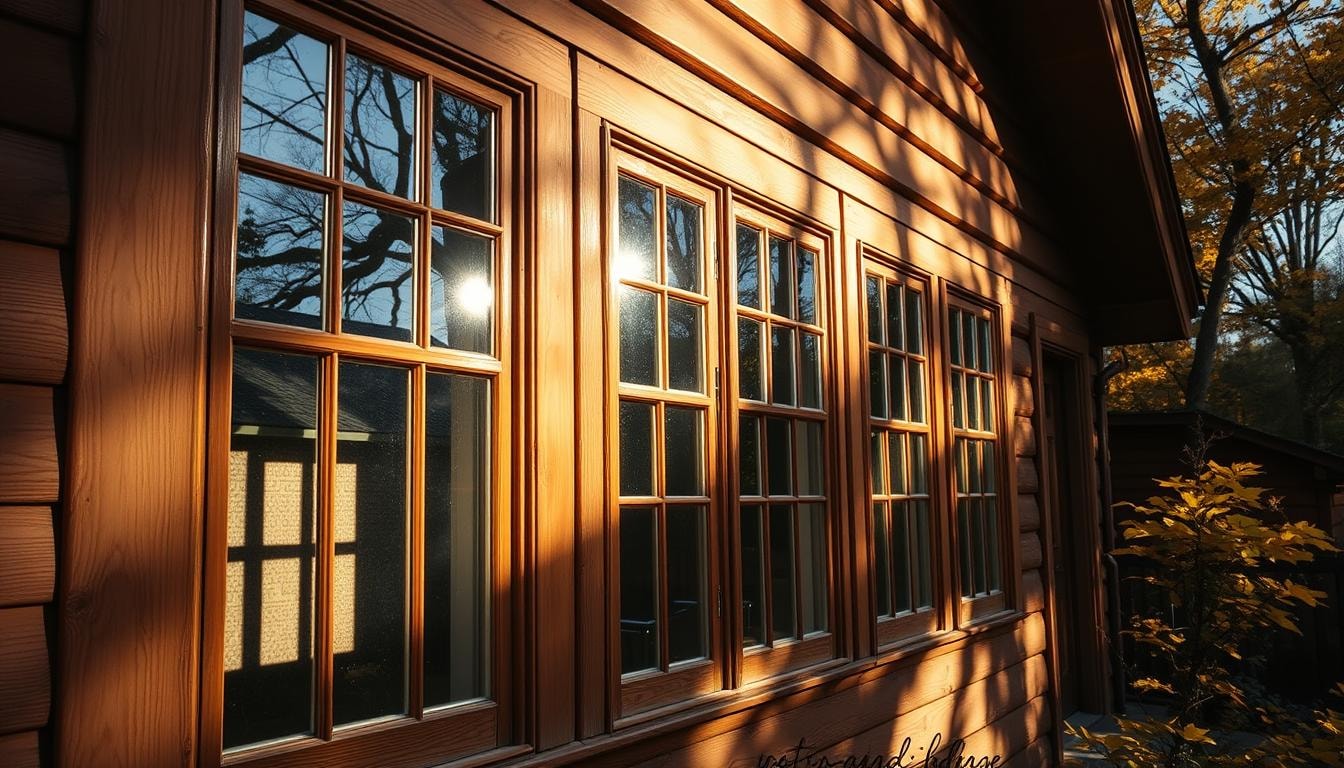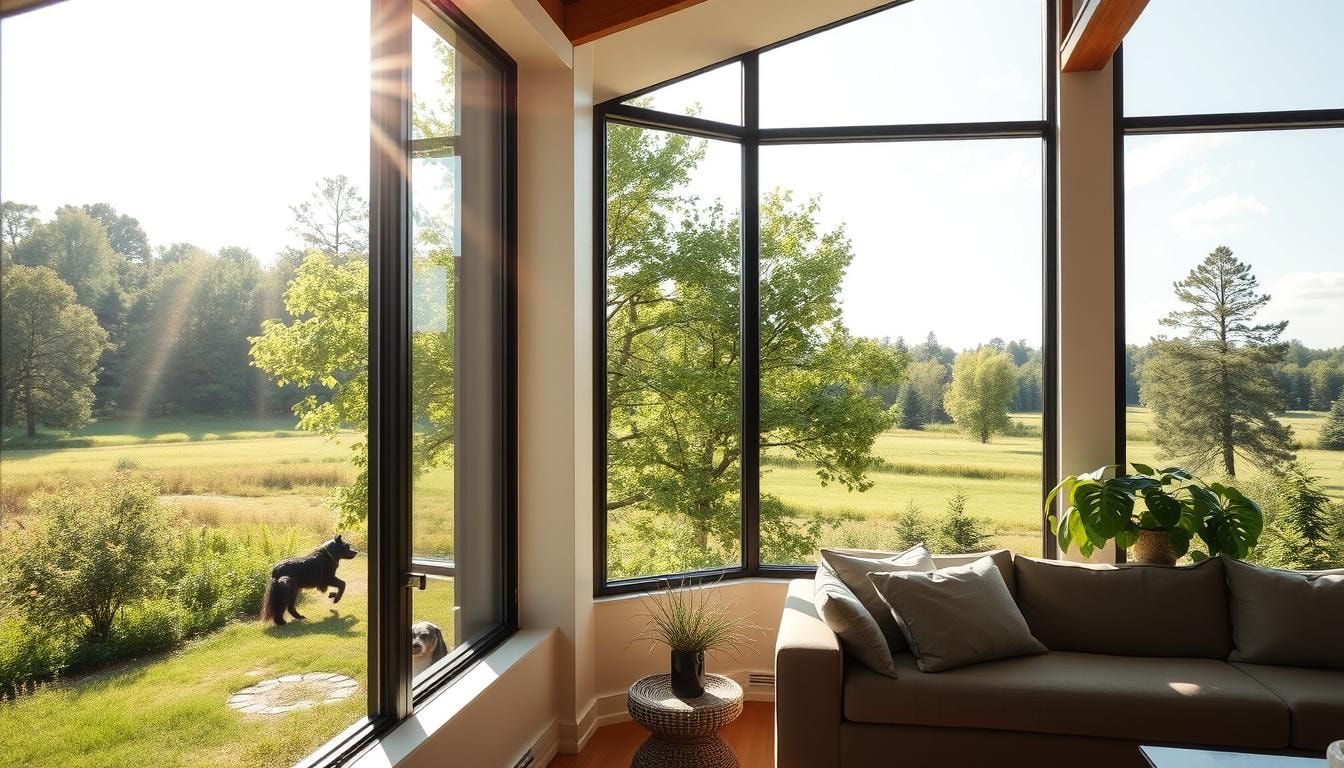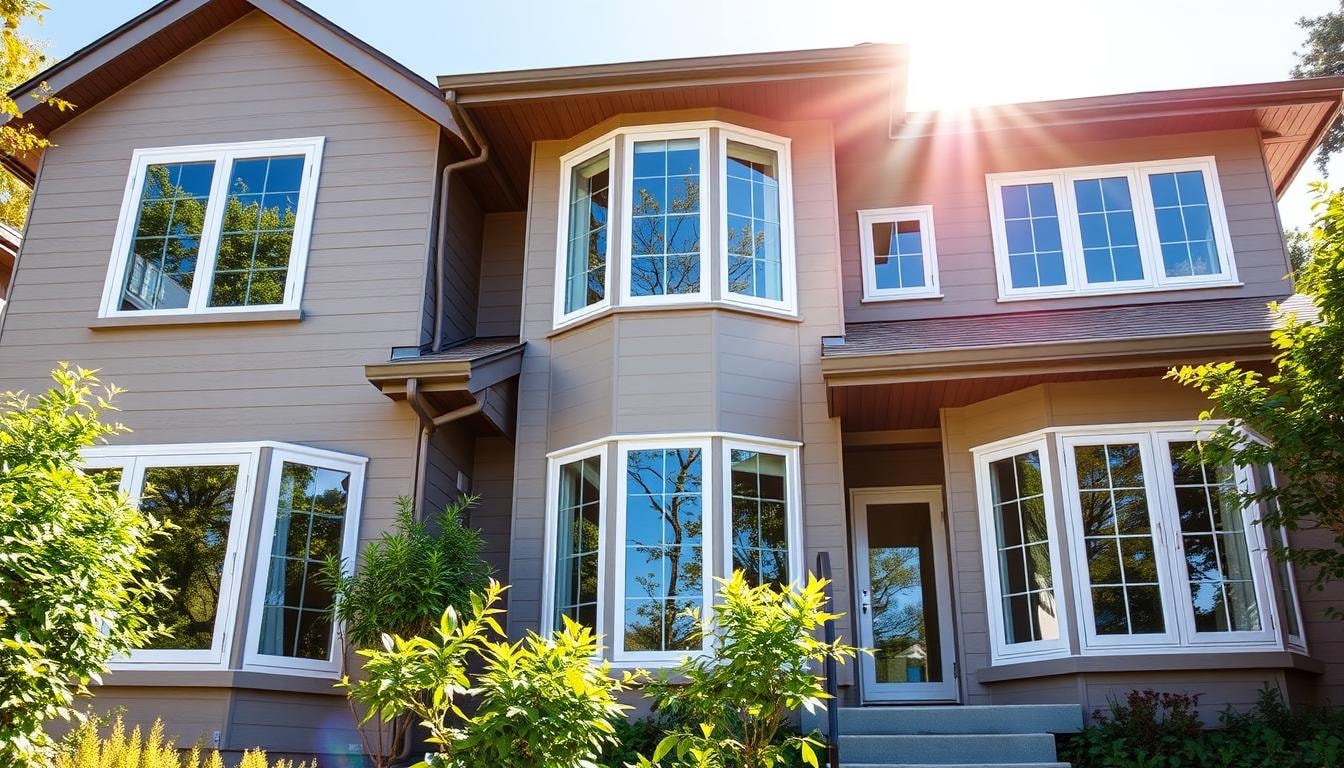
How Do You Measure for Storm Windows
Storm windows can protect your home well. They make your home more energy-efficient, quieter, and help your windows last longer. It’s important to measure right to get a good fit and performance.
You’ll need a steel measuring tape, a notepad and pen or a digital device, a ladder, and maybe someone to help. This ensures your measurements are exact.
Getting your measurements right means your storm windows will fit perfectly. This helps save energy and keeps your home safe from bad weather. By measuring carefully, you can make sure your storm windows fit your home just right.
Key Takeaways
- Accurate measurements are essential for ensuring a perfect storm window fit.
- Essential tools include a steel measuring tape, notepad, ladder, and an optional assistant.
- Proper measurements guarantee a tight seal, improving energy efficiency and weather protection.
- A structured approach to measuring window openings is crucial for achieving a custom fit.
- Attention to detail in the measurement process can prevent costly adjustments during installation.
Understanding Storm Window Basics
Storm windows help make your home more energy efficient and quieter. They come in different types, each with its own benefits. Knowing the differences between them is key for a good fit and installation.
- Types of Storm Windows: Interior storm windows fit inside your current window frame. They add insulation and soundproofing. They’re easy to put in and take out. Exterior storm windows go on the outside of your window. They protect against bad weather and keep cold air out.
- Benefits of Storm Window Installation: Storm windows bring many advantages. They make your home more energy efficient and noise reducing. They help keep your home’s temperature steady, saving on heating and cooling costs. They also increase your home’s value. This makes them a smart investment.
- Interior vs. Exterior Storm Windows: Choosing between interior and exterior storm windows depends on several factors. Consider your home’s style, the local climate, and your preferences. Interior windows are good for homes with little outside space. Exterior windows offer better weather protection.
Knowing these differences helps you pick the right storm windows for your home.
Essential Tools and Preparation for Measuring
Measuring storm windows right is key for a good fit and easy install. You’ll need a few tools and some prep work. A strong measuring tape is essential for exact sizes for your storm windows. You’ll also need a ladder to reach high windows.
Don’t forget a notepad and pen or a digital device to write down your measurements. Having someone to help, like an assistant, makes the job safer and easier, especially with a ladder.
Before you start measuring, check the area around the window. Make sure the ladder is steady and there are no dangers. Safety is the most important thing when doing home projects.
- Measuring tape for precision
- Ladder for reaching upper-story windows
- Notepad and pen or digital device to record measurements
- An assistant to help with the process
- Inspect the area for safety and stability
With the right tools and safety in mind, you’re ready to measure your storm windows. Next, we’ll show you how to measure them accurately.
How Do You Measure for Storm Windows
Measuring your windows right is key for storm windows. You need to measure at different spots to catch any odd shapes. This way, your storm windows will fit well and work great.
- Measuring Width at Multiple Points: First, measure the window’s width at the top, middle, and bottom. This finds any size differences. Use the smallest measurement for your order.
- Taking Height Measurements: Then, measure the height at the left, middle, and right sides. Like width, this finds any height differences. Again, use the smallest measurement for your order.
- Recording Measurements Accurately: Being precise is important when measuring. Use a good steel tape and check each measurement twice. Write down all the details, like width and height, in a notebook or template. This helps when you order your storm windows.

By following these steps and being accurate, you’ll know your storm windows will fit perfectly. They’ll improve insulation, cut down on noise, and boost your home’s value.
Interior Storm Window Measurement Guide
Getting the right measurements is key for installing interior storm windows. You need to measure the window frame’s depth. This ensures the storm window fits well without blocking the main window.
Start by measuring the window depth at different spots. This is important because window frames can vary. Make sure to write down your measurements carefully. Any mistakes can cause problems during installation.
Also, think about any special features in the window frame. Things like window cranks or screens can affect your measurements. Check the manufacturer’s instructions for your storm window type.
Getting your measurements right is crucial for a smooth installation. By carefully measuring the window depth and considering any special features, you’ll get the most out of your storm windows. This includes better insulation and a higher home value.
Exterior Storm Window Measurement Techniques
Measuring for exterior storm windows needs to be precise. Unlike interior ones, exterior models require more detail for a good fit. You must consider the blind stop and overlap installation.
Blind Stop Installation Measurements
For blind stop, measure the window at three spots: top, middle, and bottom. Use the smallest measurement for your order. This ensures a tight fit, even with irregular frames.
Overlap Installation Requirements
For overlap installation, add one inch to the width. This extra space helps create a tight, weatherproof seal.
Standard Sill vs. Drop Sill Considerations
Measuring the height of exterior storm windows is also important. For standard sills, measure to the top head stop. For drop sills, measure to the bottom. This makes sure the storm window fits right.
Getting precise measurements for exterior storm windows is crucial. By following these steps, you’ll get windows that are energy-efficient and protect well.
Common Measurement Challenges and Solutions
Replacing or installing storm windows can be tricky. One big problem is dealing with odd-shaped frames or windows, like arches. To fix this, use shims to get precise measurements. For arches, measure at the top to fit right.
Another issue is making mistakes while measuring. To avoid errors, measure several times and check your notes. It’s also smart to have someone else check your work. Always measure from the same spot and remember the frame’s quirks.
- Irregular frames: Use shims to get accurate readings
- Unique window shapes (e.g., arches): Measure at the highest point
- Measurement errors:
- Measure multiple times and compare notes
- Involve another person to verify measurements
- Measure from the same point each time
- Account for frame irregularities
By knowing these common problems and using the right methods, you can get your storm window measurements right. This is true for odd frames, special shapes, or any measuring mistakes.

Installation Methods and Their Impact on Measurements
There are two main ways to install storm windows: the Eastern Overlap Method and the Western Blind Stop Method. Knowing about these methods is key for getting your measurements right. This makes the installation of storm windows smooth and accurate.
Eastern Overlap Method
The Eastern Overlap Method adds an inch to the window’s width. This inch is for the overlap of the storm window frame with the existing one. It helps the storm windows fit tightly, keeping air out and saving energy.
Western Blind Stop Method
The Western Blind Stop Method measures the window’s width and height inside the blind stop. The blind stop is a recessed area on the exterior of the window frame. Measuring here ensures a perfect fit and avoids installation problems.
Choosing the right installation method depends on your home’s needs and location. It’s important to think about these methods to ensure your storm windows are installed correctly. This protects your home from the weather.
Get the Perfect Fit for Your Existing Windows
Measuring your existing windows correctly is crucial for getting the right storm windows. At Budget Windows, our experts can guide you through the process to ensure a perfect fit – now and in the long run.
Whether you have standard windows or unique shapes like arches, we can help you measure the width, height, and depth of your existing window opening. We’ll account for details like the bottom of the window and the blind stop to recommend the ideal storm sash for your home.
With our tailored solutions, you’ll enjoy improved energy efficiency, noise reduction, and weather protection for your primary windows. Contact Budget Windows today to schedule a free consultation with our knowledgeable team and get the perfect storm windows for your home.
Conclusion
Measuring your windows right is key for a good fit and energy savings. Follow our guide, use the right tools, and pick the right installation method. This way, you can get the perfect storm windows for your home.
Measure the width at different points on the frame and pick the smallest one. Also, record the smallest height on the left, center, and right sides. Don’t forget to check the depth of the frame for a snug fit.
Being careful with your measurements can save you money and time. Check the manufacturer’s instructions for any special needs for your storm windows. With accurate measurements and the right windows, you’ll see better energy use and home safety.
FAQs
How do I measure the width of my existing window for a storm window?
You should measure the width at the top, middle, and bottom of the window frame, and use the smallest of these three measurements when ordering your storm window. This ensures a proper fit.
How do I measure the height of my existing window for a storm window?
Measure the height on the left side, in the center, and on the right side of the window frame. Again, use the smallest of these three measurements when ordering your storm window to get the best fit.
Why is it important to measure the depth of the window frame for an interior storm window?
Measuring the depth is crucial to ensure the storm sash will fit properly inside the existing window frame without obstructing the primary windows.
What is the difference between the Eastern Overlap and Western Blind Stop installation methods for exterior storm windows?
The Eastern Overlap method adds an inch to the window width for the storm window frame to overlap the existing window. The Western Blind Stop method measures the width and height inside the recessed blind stop area of the window frame.
How can I ensure I get the same measurement for my storm window on all sides of the existing window?
Measure the width at three different places – top, middle, and bottom. Measure the height on the left side, center, and right side. Use the smallest of these three measurements to get a proper fit for your storm window.







